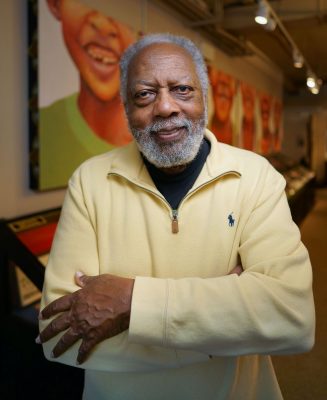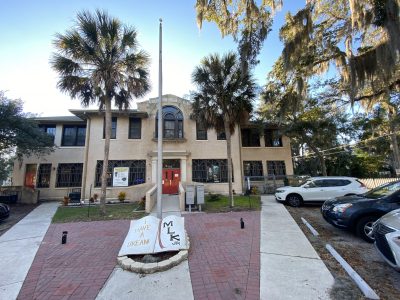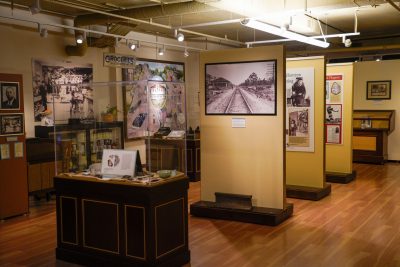Floyd Philips is president of the Lincolnville Museum in St. Augustine, Florida. Formerly a Miami resident in the insurance industry, Floyd relocated to St. Augustine because of its history, and wanted to be a part of preserving it. He became involved with the museum in 2015.
“It was on the verge of collapse. I saw the great need, and saw its potential,” Philips said. “I never dreamed I’d be in the museum business, but knowing what I know now, I would have been involved years and years ago.”

A. The Lincolnville Museum is a 501(c)(3) nonprofit organization set up to teach, promote, develop, and share the history of African-Americans in the Lincolnville neighborhood of St. Augustine going back more than 450 years. It shapes the community by providing cultural events in the area, such as jazz events, lectures, and museum exhibits in the community. Working with the museum, you never know who you will encounter. Just this week we’ve had visitors from China, New York, South Carolina, and Tampa, Florida. It’s always encouraging to see young people come here and how engaged they become.

A. Individuals in the community came together with the desire to promote and save the culture in this community, because gentrification is in full bloom here. It was a concern that the cultural contributions of the African-American community here would be lost if it was not preserved. In 2005, a group of concerned citizens founded the Friends of Lincolnville and opened the museum.
A. St. Augustine receives approximately 7 million visitors to this area each year. A large percentage of those individuals are African-Americans. But, the history that is here is not widely known even by the residents, because we have an influx of new residents from other areas. If we don’t promote this history, it will be lost. People come specifically to St. Augustine for its history, so we are compelled to promote and preserve it.

A. During that particular period, there was hopelessness in the African-American community in St. Augustine. Martin Luther King indicated that this was perhaps the most difficult city he had encountered throughout his endeavors in the Civil Rights struggle. His time here in 1964 was so important because it put a spotlight on the poor race relations in St. Augustine, which became a national spotlight, which then led to the enactment of the Civil Rights Act of 1964.

A. I hope everyone walks away with the understanding that African-Americans have made significant contributions to this region. And, that this museum is the only place in the country where one can acquire more than 450 years of history about this community. We recently did an archeological dig where a mass grave was uncovered and, through testing, it was determined that a percentage of the inhabitants of the mass grave were Africans. This means that when the city was settled in the beginning, Africans were already here. We had believed it, but we now have scientific data to prove that Africans were here when Spain settled this region.
A. We have many compelling stories here within the museum. One that gets a lot of attention is a photograph of the swimming pool of the Monson Motor Lodge in St. Augustine in 1964. We have the photograph that’s been seen around the world, in which the hotel owner Mr. James Brock was pouring acid into the pool while African-American protestors were swimming. This seems to excite a lot of people because even if they’ve seen the photo before, when they start to hear the history and see the artifacts that we have from the event, they are moved. We have a tile from the pool, and its depth marker. When people see these they really make a connection to the reality of an individual pouring acid into a swimming pool with human beings in it.
A. We are in the process now of archiving an exhibit from Savannah, Georgia. Called “Making Do,” it is an exhibit of everyday life and culture of the Gullah-Geechee people. It’s very exciting, and we expect to open the exhibit within the next two weeks.
A second exhibit will open the first of April. Titled the “Harlem Renaissance,” it will be a virtual reality experience for individuals 10 years old and up.
As for renovations, our building is 94 years old and is in need of great repairs. We are in the process now of renovating 9,000 square feet of the upstairs. We will add a new ceiling, new energy-efficient LED lighting, and flooring.